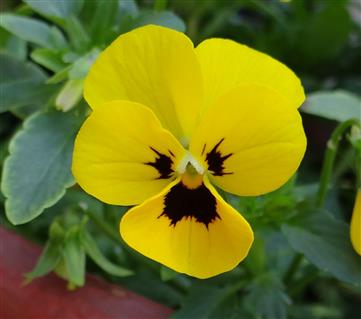VIOLACEAE
Annual or perennial herbs, shrubs or rarely trees, sometimes rhizomatous or stoloniferous. Leaves cauline or basal, simple, usually alternate, sometimes opposite, stipulate, stipules small or leaf-like, petiolate, margin entire, serrate or dissected. Flowers usually bisexual, sometimes unisexual or polygamous, usually zygomorphic, sometimes actinomorphic, solitary axillary or in axillary or terminal spicate, racemose or paniculate, or sometimes on scape-from rhizome or stolon, often 2-bracteolate. Sepals 5, free or connate at base, equal or unequal, persistent. Petals 5, free, imbricate, spreading, unequal, 4 equal in size, anterior one usually the largest, saccate, gibbous or spurred at base. Stamens 5; filaments free, very short or absent; anthers erect, free or connivent or connate, surrounding ovary, connectives often dilated into membranous appendages; anterior 2 stamens with spur-like nectaries at base, protruding into corolla spur. Pistil 1, 3-5-carpellate, syncarpous, ovary superior, unilocular with 3-5 parietal placentas, each with 1 to many anatropous ovules; style simple, mostly sigmoid or thickened above; stigma 1, usually truncate, lobed, beaked or simple, with or without hairs. Fruit a 3-valved capsule, dehiscing loculicidally, valves usually elastic and abaxially carinate, rarely indehiscent, baccate or nut-like. Seeds numerous, mostly sessile, sometimes borne on a short funicle, smooth or rough.
24 genera, about 490 species
